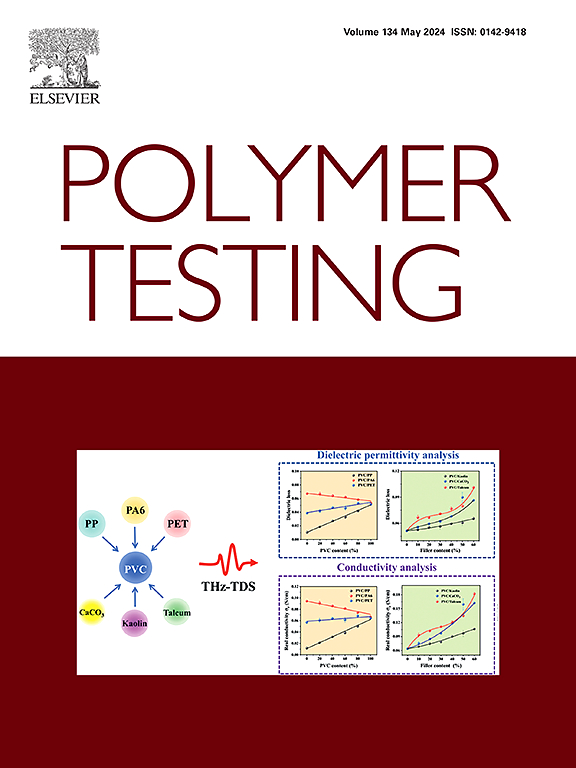Fatigue and wear performance of bioepoxy vacuum-infused and autoclave-cured E-glass fiber reinforced polymer composite gears in mesh with a steel pinion
IF 5
2区 材料科学
Q1 MATERIALS SCIENCE, CHARACTERIZATION & TESTING
引用次数: 0
Abstract
Polymer composite gears are under investigation as a promising solution to mitigate the performance gap between polymer and metal gears. The study presented in this paper evaluates the fatigue and wear performance of E-glass fiber reinforced polymer composite gears. The E-glass fibers are vacuum infused with bioepoxy, followed by autoclave curing. High-speed milling is utilized to fabricate the gears, which are then subjected to testing at torques ranging from 0.5 to 0.8 Nm. Gear failure modes predominantly include wear combined with tooth edge intra-bundle fiber delamination due to fatigue, followed by extensive inter-ply delamination just prior to failure. Gear tooth wear volume demonstrates a nearly linear correlation with the number of cycles, with accelerated wear rates observed at higher torques. E-glass fiber polymer composite gears exhibit a shorter service life and a higher wear coefficient compared to our previously developed carbon fiber reinforced polymer composite gears. However, their performance remains fair, with a service life between that of PA6 GF30 and PA66 GF30 glass fiber reinforced gears.
真空灌注生物环氧树脂和高压固化玻璃纤维增强聚合物复合材料齿轮与钢制小齿轮啮合时的疲劳和磨损性能
聚合物复合齿轮作为一种有前途的解决方案,正在接受研究,以缩小聚合物齿轮与金属齿轮之间的性能差距。本文介绍的研究评估了 E 玻璃纤维增强聚合物复合齿轮的疲劳和磨损性能。E 玻璃纤维在真空中注入生物环氧树脂,然后进行高压固化。利用高速铣削制造齿轮,然后在 0.5 至 0.8 牛米的扭矩范围内进行测试。齿轮的失效模式主要包括磨损和疲劳导致的齿边束内纤维分层,以及失效前的大面积层间分层。齿轮齿磨损量与循环次数几乎呈线性关系,扭矩越大,磨损率越快。与我们之前开发的碳纤维增强聚合物复合材料齿轮相比,E 玻璃纤维聚合物复合材料齿轮的使用寿命更短,磨损系数更高。不过,它们的性能仍然不错,使用寿命介于 PA6 GF30 和 PA66 GF30 玻璃纤维增强齿轮之间。
本文章由计算机程序翻译,如有差异,请以英文原文为准。
求助全文
约1分钟内获得全文
求助全文
来源期刊

Polymer Testing
工程技术-材料科学:表征与测试
CiteScore
10.70
自引率
5.90%
发文量
328
审稿时长
44 days
期刊介绍:
Polymer Testing focuses on the testing, analysis and characterization of polymer materials, including both synthetic and natural or biobased polymers. Novel testing methods and the testing of novel polymeric materials in bulk, solution and dispersion is covered. In addition, we welcome the submission of the testing of polymeric materials for a wide range of applications and industrial products as well as nanoscale characterization.
The scope includes but is not limited to the following main topics:
Novel testing methods and Chemical analysis
• mechanical, thermal, electrical, chemical, imaging, spectroscopy, scattering and rheology
Physical properties and behaviour of novel polymer systems
• nanoscale properties, morphology, transport properties
Degradation and recycling of polymeric materials when combined with novel testing or characterization methods
• degradation, biodegradation, ageing and fire retardancy
Modelling and Simulation work will be only considered when it is linked to new or previously published experimental results.
 求助内容:
求助内容: 应助结果提醒方式:
应助结果提醒方式:


